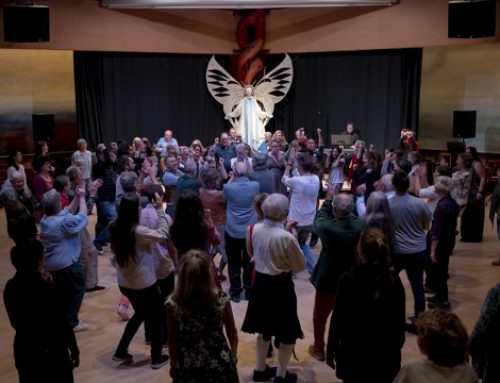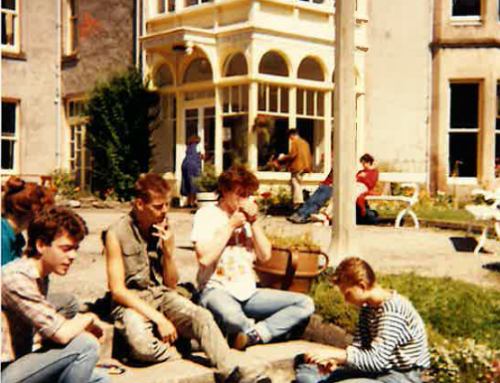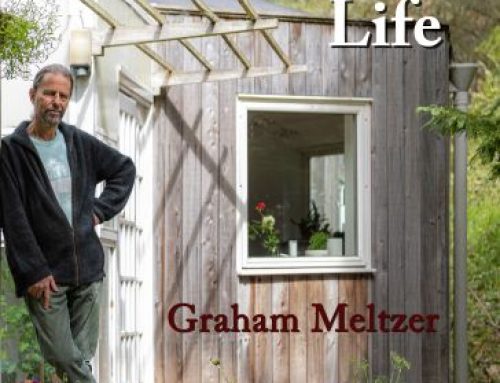The way a health care system integrates death is indicative of the degree of holism implemented in its principles. In the reductionist world view, death is the ultimate enemy, the annihilation of all that is good and meaningful. The task of medicine within the reductionist paradigm is to prevent death at all costs. This cost may be high for the individual, as well as for society. Individuals may undergo dramatic interventions and possibly mutilation, while society incurs tremendous financial costs through the provision of facilities to cater for every possible eventuality. Doctors in this scenario are the heroic saviours who bring people back from the brink of death. An important emphasis in medical training is to produce experts at combating death. They require skills and an outlook on life which is not easily compatible with those who hold out for improved life quality and self-empowerment.
The Holistic View of Death
The dying process is a crucial element of life. It is an important stage in an individual’s development, which can provide great learning and evolution. If the dying process is allowed to unfold in a dignified way, it not only serves the individual but also those witnessing the process. This has been experienced by many people who have been working consciously with the dying process in the hospice movement.
In the last 15 years the perceptions of death and its relevance for life quality have changed. The work which was pioneered by Elisabeth Kübler-Ross, Stephen Levine and others has now become part of a common understanding and value system. However, the actual realisation of these values is not fully in place yet, and it will be some time before it has filtered through all the strata of medical practice.
How these values can be implemented during life-threatening illness or trauma is dependent on the presenting situation. Sometimes decisions have to be taken under great duress and time pressure, as in the case of resuscitation, and it is understandable that doctors and medical staff will tend to actions which prolong life. Reports of people being resuscitated and kept alive on ventilators in a comatose or vegetative state have been material for much media coverage to illustrate the inhumaneness of modern medicine. It is in these situations that the voice of the patient is demanding a change in the procedures.
Advance Directives
Patients are drawing up documents of ‘advance directives’ or ‘living wills’ where they state that if terminally ill they do not wish to have their life prolonged by medical interventions.[1] The BMA published a statement that:
Common law establishes that an informed refusal of treatment made in advance by an adult who understands the implications of that decision has the same legal power as a contemporaneous refusal.[2]
The Medical Defence Union advises:
. ..that clinicians should consider advance directives very carefully. When there is no hope of alleviating suffering, or of prolonging life with any appreciable quality, and the situation falls within the full terms of the advance directive, then clinicians should treat an advance directive as the settled wishes of the patient and act upon it if the clinical situation requires it. They should also consider that the patient may have changed his mind since signing the directive and take any evidence of this into account. Clinicians should, however, remember that an advance directive does not give carte blanche and that they should still act within the law. Thus, no advance directive will permit any clinician to commit a positive act for the purpose of ending a patient’s life.[3]
This more detailed advice, set in the medico-legal context, shows that there is still considerable room for debating the right of patients to determine their own care, and that patients need to be very clear with their doctors if they want to ensure that their wishes are being acted upon.
Euthanasia
The discussion regarding euthanasia and the question of whether doctors can assist patients in a death of their choice has been prominent in the medical journals in the last year. Bruce Carlton rightly poses the question ‘Will you accept a duty to kill?’ – for if there is the right to euthanasia then there is someone who has to assist at the death[4] A survey amongst doctors showed that the profession is split over this issue: 46% believe that doctors should be legally permitted to actively intervene to end life of a terminally ill patient where the patient, when competent, has made a witnessed request for euthanasia; 44% of doctors said they should not be permitted to do so. Only 37% were themselves actually willing to actively intervene in such a case, whereas 48% would not.[5]
A Personal View
Being German I am acutely aware of the potential abuse of euthanasia. I am not interested in investing even more power in the medical profession. I do not have any answers to this complex issue. I question the ethics of keeping someone alive at all costs and particularly against their expressed will. The concept of improving death quality as an expression of life quality is very compelling for me. As death is an integral part of life, its quality and dignity must be an objective as important for health care professionals as supporting patients to improve their health and life quality.
Death and Spirituality
The process of dying is one of the most obvious points in health care where the question of spiritual values and beliefs is confronted in the practical work with the patient. In many cases, health care professionals are unfortunately not very well prepared through their training to use the full potential of these situations.
The purpose of life, the importance of the soul and the significance of the transpersonal level are all questions patients frequently face in their dying process. If the health care professional is willing to accompany the patient in this process, sharing both questions and beliefs, this can create great rapport between them and with the patient’s family, becoming a source of nourishment for all and professional fulfilment for the practitioner. Openness, acceptance and a willingness to trust the innate wisdom of a person’s life path are the essential qualities needed for this kind of care.
Fun Death
Dr Patch Adams, an American doctor, clown and social activist goes even further. He advocates fun death and asks his patients what kind of death they want.
Do you want a miserable, anxious death, alone in a hospital, with everybody acting as if you are already dead? Or would a fun death be more to your liking? By ‘fun’ I simply mean whatever that individual considers ideal, within the limits of feasibility.[6]
He encourages his patients to be fully alive, for instance living with cancer, not dying from it: ‘Dying is that process a few minutes before death when the brain is deprived of oxygen; everything else is living.’[7]
Death is an important passage in life which can be created consciously as a celebration and acknowledgment of the life people have led and the bonds they have forged. What a tragedy that this opportunity is missed for the vast majority of people in our society.
Contemporary society is experiencing a major breakdown of family structure. It’s time to glue it back together again. The intimacy of planning and creating an intimate death experience would form that kind of event. Let’s stop fearing death and transform it into an experience that could bring us closer together as a family. Let’s have a fun death.[8]
References:
1 Living Will, The Natural Death Centre, 1993.
2 BMA, Code of Practice 1995.
3 David Bereford, comment from the medico-legal adviser with the MDU, J MDDU, 1995; 11: 2, 29.
4 Bruce Carlton, Will you accept a duty to kill?, Med Monitor, 7 Feb 1996; 8.
Sheila A M McLean, Making advance medical decisions, J MDDU, 1995; 11: 2, 28-9.
5 Julie Coulson, Till death us part?, BMA News Review, Sept 1996; 23-5.
6 Patch Adams, Gesundheit, Healing Arts Press, 1993; 80-4.
7 ibid.
8 ibid.
Further Reading
Albery, Nicholas et al (eds), The Natural Death Handbook, Virgin, 1993.
Bradfield, J B, Green Burial, The ‘D-I-Y’ Guide to Law and Practice, Natural Death Centre, 1994.
Duda, Deborah, Coming Home-A Guide to Dying at Home with Dignity, Aurora, 1987.
Fremantle, Francesca; Trungpa, Chögyam (eds), The Tibetan Book of the Dead, Shambala, 1975.
Gill, Sue; Fox, John, The Dead Good Funerals Book, Engineers of Imagination, Ulverston, 1996.
Grof, Stanislav; Halifax, Joan, The Human Encounter with Death, Souvenir Press, 1978.
Kübler-Ross, Elizabeth, On Death and Dying, Routledge, 1973
——-, Living with Death and Dying, Souvenir Press, 1982.
Lee, Elizabeth, A Good Death – A Guide for Patients and Carers Facing Terminal Illness at Home, Rosendale Press, 1995.
Levine, Stephen, Who Dies?-An Investigation on Conscious Living and Conscious Dying, Gateway Books, 1986.
——-, Healing into Life and Death, Gateway Books, 1990.
Lorimer, David, Whole in One – The Near-Death Experience and the Ethic of Interconnectedness, Arkana, 1990.
Rinpoche, Sogyal, The Tibetan Book of Living and Dying, Rider, 1992.
Wilber, Ken, Grace and Grit, Shambala, 1992.
***
This post was previously published as a chapter in the book Medical Marriage, the New Partnership Between Orthodox and Complementary Medicine, Dr Cornelia Featherstone and Lori Forsyth, published by Findhorn Press, 1997.

Originally German, I came to Findhorn in the search of ‘It’. I found ‘It’ in our way of sharing our spirituality in our daily lives, privileged to work with my focus on Healing in the widest sense.











Leave A Comment